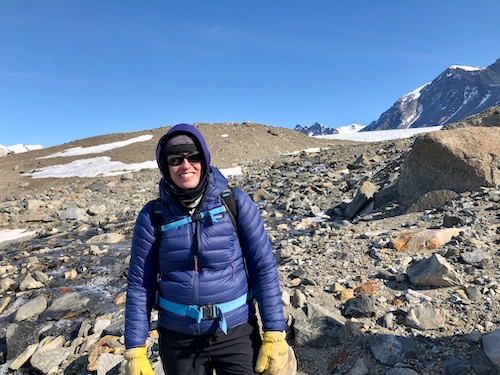
The focus of my team has been the microbes that live in the Dry Valley lakes. But there is a wider picture of the Dry Valleys I'd like to show you by highlighting the work of a different science team that focuses on glaciers and streams. Dr. Mike Gooseff and Dr. Renee Brown form part of team C-504. Team C-504 is part of the larger group of scientists known as LTER: Long Term Ecological Research. Some LTER teams study lakes, moats, and soils. C-504 focuses on streams and glaciers, collecting data over the course of DECADES.

I had an opportunity to go out with team C-504 to collect samples from the Canada Stream that flows from Canada GlacierA mass of ice that persists for many years and notably deforms and flows under the influence of gravity. into Lake Fryxell. The stream is on an Antarctic Specially Protected Area (ASPA) that requires a permit to enter. The ASPA protects microbial mats that grow in and around the stream. Consider what these mats must endure to live there: the stream is their only water source, but it only flows from November to February. The other months of the year, its dry, very, very cold and dark and the mats are dormant.

So Dr. Mike Gooseff and Dr. Renee Brown measure many variables, including temperature, rate of flow, amount of nutrients, dissolved oxygen and pH. This data has been collected every year for over 30 years! When the team measures glaciers, they observe how much snow has accumulated, how dense and wet it is and which ways it has shifted from year to year.

Why invest the time and resources to collect the same data, year after year? Well, we want to know how this ecosystem, including living and nonliving components, is CHANGING over time. Without having multiple years of data to compare, we can't know if changes are significant or not. If there's a big snow year, or a really cold year, is it a one-off? Does the ecosystem bounce back to a stable setting afterwards, or is a "new normal" set of conditions created? This stockpile of data collected and analyzed by LTER can help us determine the degree of resiliency in this ecosystem and how each part of the system influences the others.



Comments